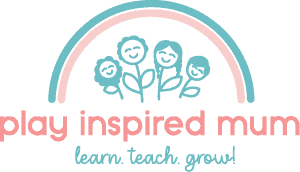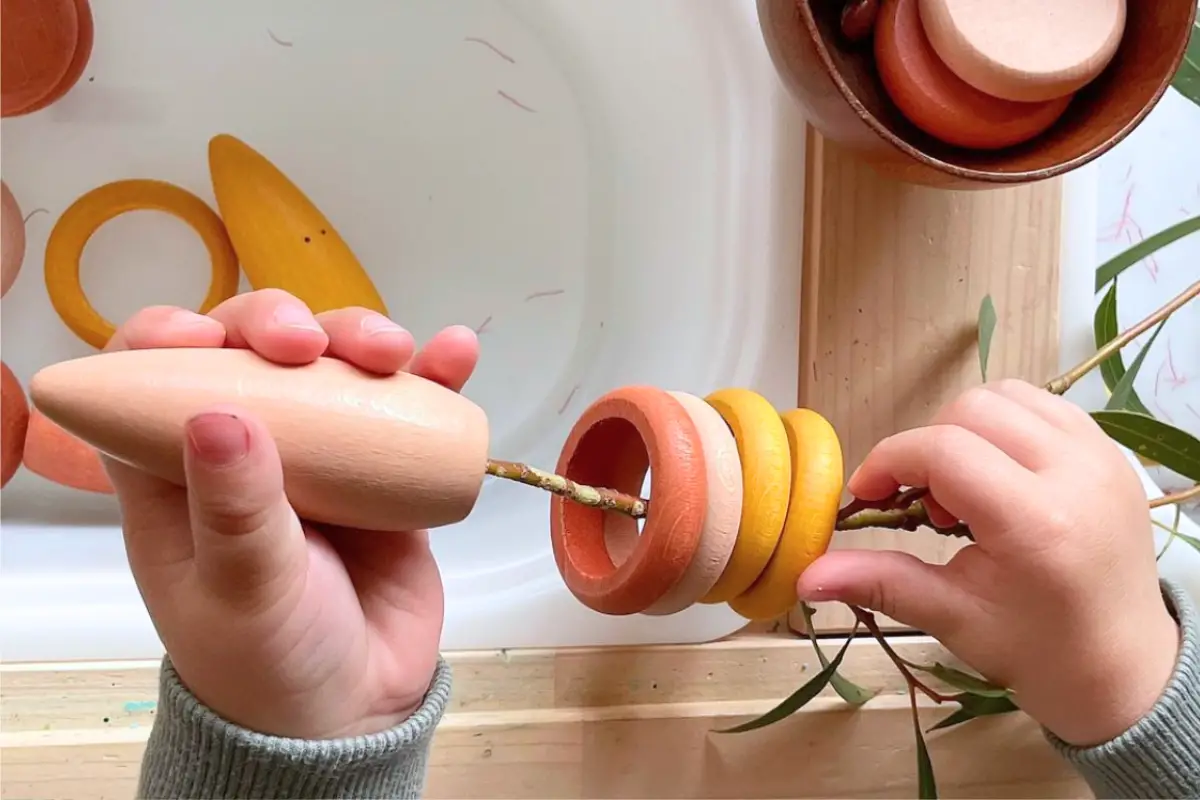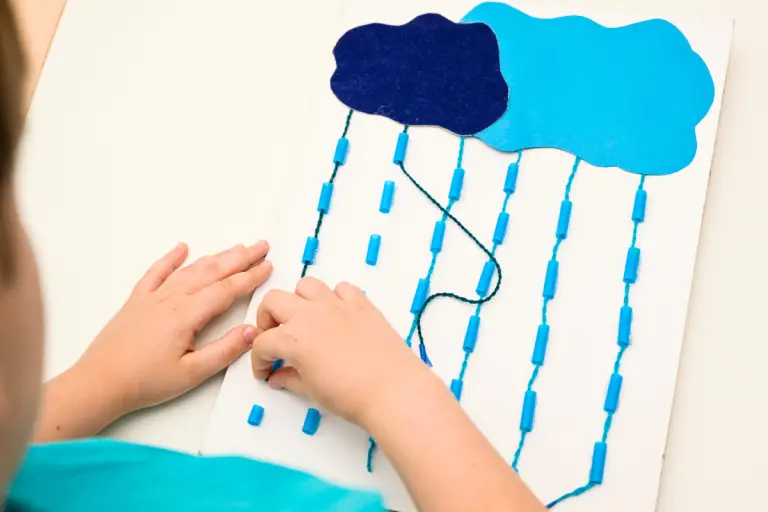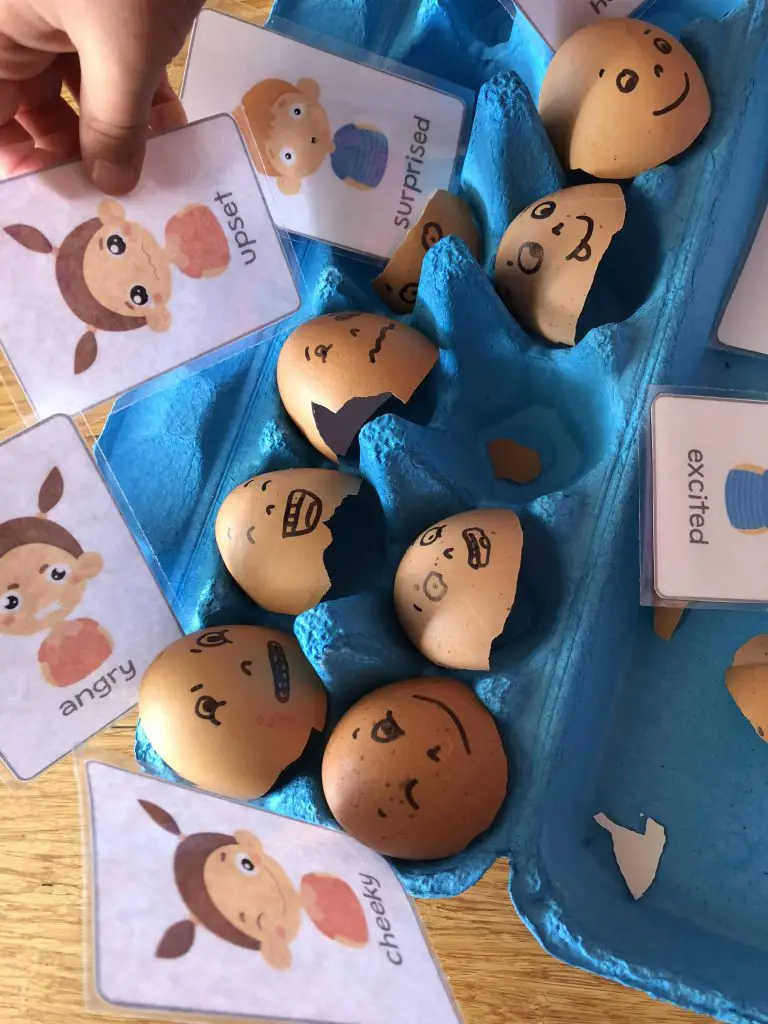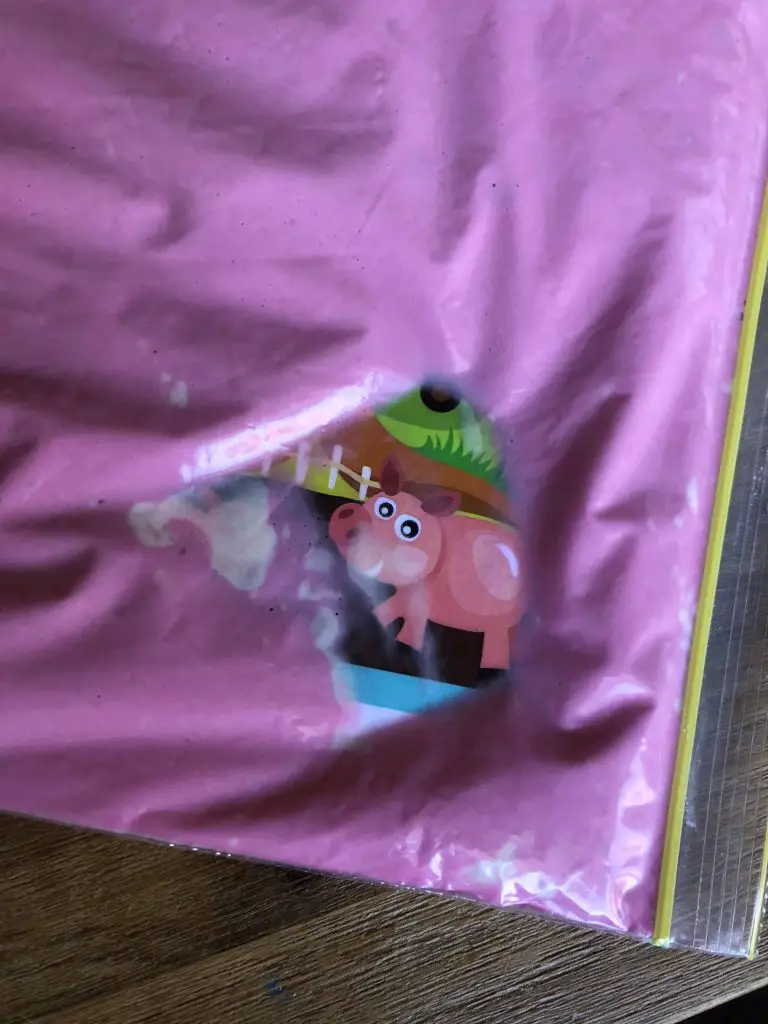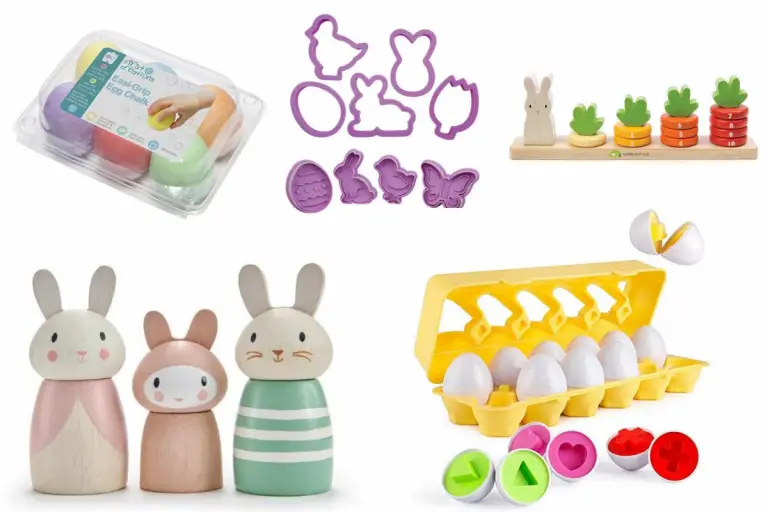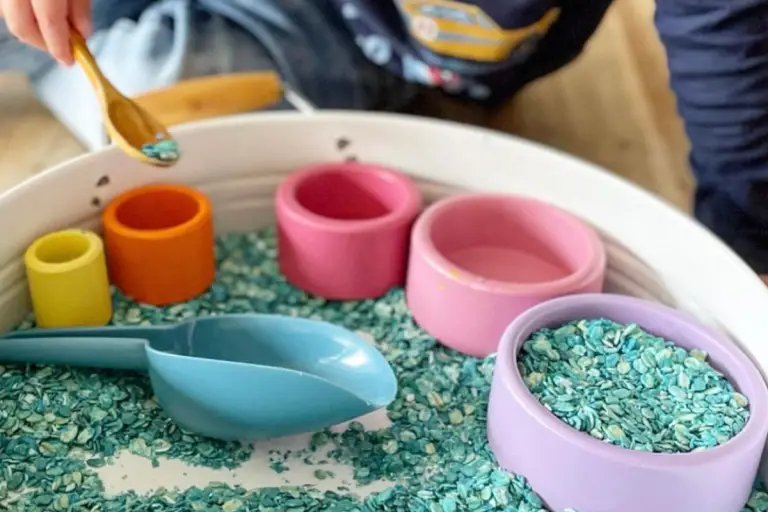Natural Play: Threading Wooden Rings on Branches
Disclosure: This blog contains affiliate links which I may earn a small commission from if you purchase through them, at no extra cost to you.
Threading onto natural branches is a great sensory activity for your toddler.
Loads of incidental learning and developing vital skills.
All with some natural branches!
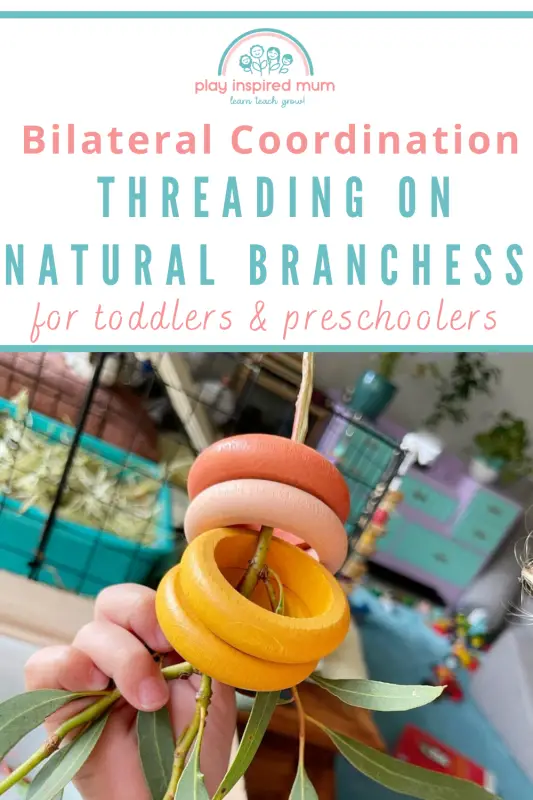
Threading with Natural Branches
I discovered a gem of an activity that perfectly blends learning and nature.
Threading wooden rings onto natural branches not only engaged my little one but also turned out to be an enriching sensory play experience.
This simple play idea, leveraging materials right from our front yard, served as a stepping stone towards fostering fine motor skills in a fun, relaxed setting.
The tactile sensation of feeling the bark, combined with the focus needed to slide rings onto branches, significantly boosts hand eye coordination.
It felt magical watching my toddler navigate through the process, their concentration unwavering, illustrating the profound impact of play based learning right before my eyes.
Encountering the textures of natural branches and the smooth edges of wooden rings, they unknowingly honed their bilateral coordination, all through the guise of play at home activity.
It’s fascinating how something as straightforward as this can facilitate such critical developmental milestones.
Benefits of Threading for Toddlers
Threading wooden rings onto natural branches, does wonders for toddlers.
It’s more than just a play at home activity.
It’s a cornerstone for developing fine motor skills.
These simple play ideas harness the power of learning through play.
Each time my toddler picks up a wooden ring, their tiny fingers learn to grip, turn, and slide, all of which are crucial for hand eye coordination.
Bilateral coordination gets a workout too, as they use both hands in harmony.
Imagine, through such a straightforward task, they’re laying the groundwork for skills they’ll use in writing, dressing themselves, and so much more.
This sensory play is not just fun.
It’s formative, offering a multifaceted approach to learning at home.
With every ring threaded, they’re mastering essential life skills, almost unknowingly, through play based learning.
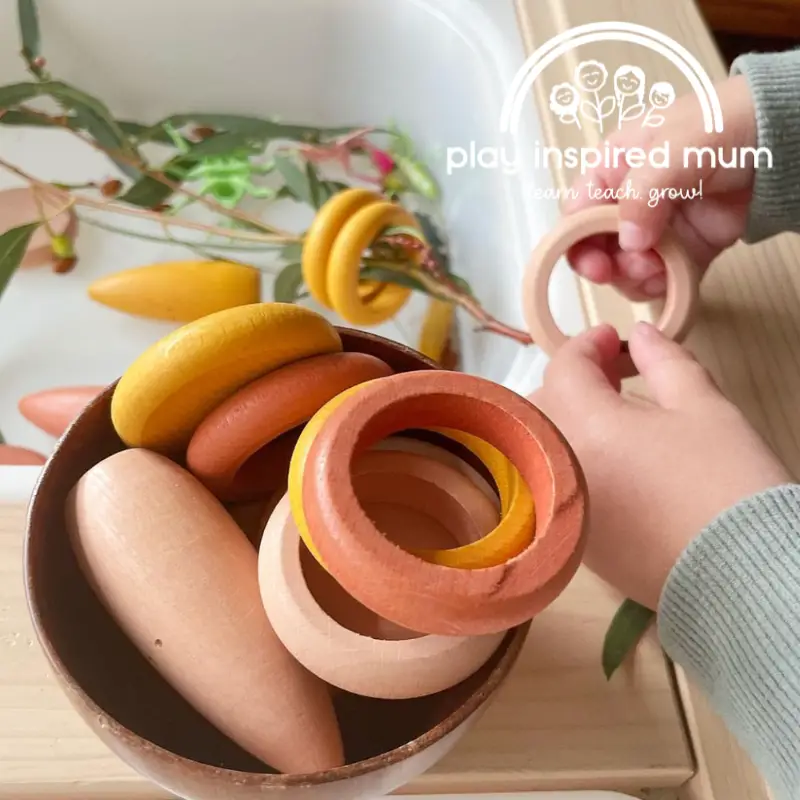
Gathering Your Materials
I am always looking for inspiration for simple play ideas for toddlers that would engage them in learning through play.
I stumbled upon an activity that promises not just fun but a plethora of developmental benefits while gathering natural branches for our pet stick insects.
Mr 2 had been playing with the flowers and leaves on the branch which got me wondering how else we could use the branch in our play.
We would need to gather some natural branches and wooden rings.
These materials, ideal for a play at home activity, are not just easily accessible but also imbue the essence of nature into our learning space.
Finding natural branches becomes an adventure in itself, turning into a sensory play activity as we feel the textures and observe the variety in shapes and sizes.
The wooden rings, on the other hand, can either be found or sourced from local craft stores.
They are central to this play based learning experience, facilitating
- fine motor skills
- hand eye coordination
- bilateral coordination
Threading these rings onto the branches will challenge and delight your toddler, making every moment of this play at home activity a rich learning opportunity.
Preparation of Materials
I gathered wooden rings and natural branches, keen on crafting a play at home activity that promised both learning and fun.
My focus was on promoting fine motor skills and sensory play through this simple play idea.
The first step involved smoothing the surfaces of the branches.
Ensuring they were devoid of splinters was crucial to make them toddler-friendly.
The wooden rings, chosen for their sensory appeal and ease of handling by little hands, were next.
I checked each for smoothness, mindful of the tender skin of toddlers engaging in this threading activity.
This preparation phase, albeit quick to set up, was vital for a safe toddler play experience.
It underscored my commitment to learning through play, leveraging play based learning in a home environment.
The goal was clear.
To enhance fine motor skills, hand eye coordination, and bilateral coordination in a setting that felt nothing less than natural play.
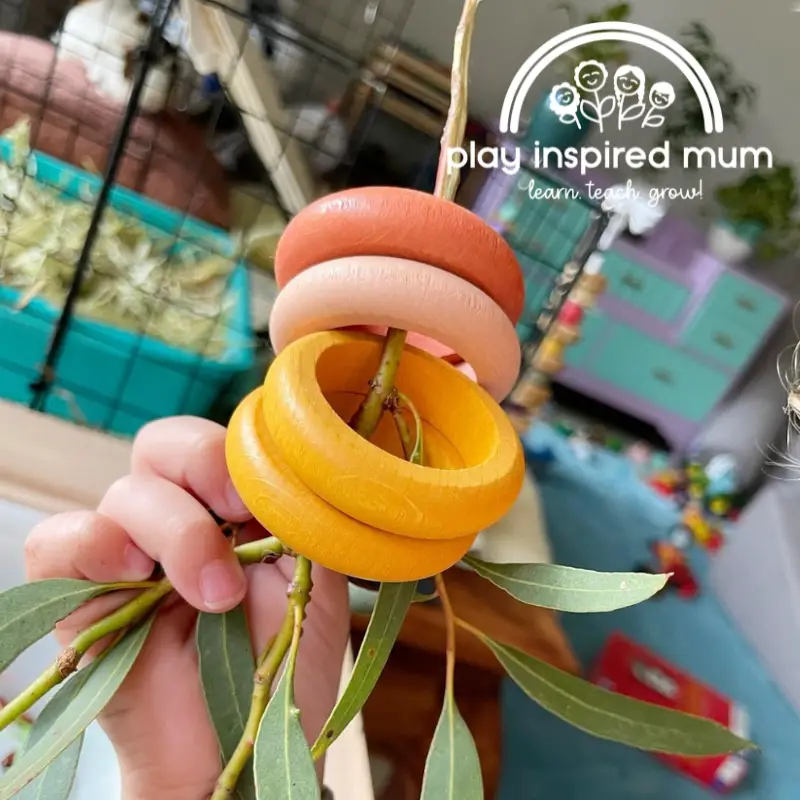
Setting Up the Activity
Truth be told I gathered the natural branches for our stick insects. It wasn’t until we got home that the idea came to me.
We had the wooden rings out already for some small world play on Mr 2s wooden tree house.
I checked the branches, ensuring they were smooth and safe for handling.
This set-up was ready to offer an engaging session of threading, a play-at-home activity both simple and profound in its learning potential.
It was not just about developing fine motor skills or bilateral coordination.
Iit was an invitation for my toddler to explore, create, and learn through play.
An open-ended setup was crucial.
It encouraged my child to approach the activity without constraints, fostering creativity and hand-eye coordination in unexpected ways.
We saw this as more than just toddler play.
It was an essential step towards building foundational skills through play-based learning at home.
Guiding Your Toddler
I found that guiding your toddler through the process of threading wooden rings onto natural branches can be a delightful play at home activity, fostering essential skills such as fine motor skills, hand eye coordination, and bilateral coordination.
In our experience, learning through play, especially with play based learning activities like this, significantly enhances their capacity for learning at home.
At first, I simply placed the branches and wooden rings in front of them, watching their curiosity take over.
Sensory play kicked in as they explored the textures of the natural branches and the smoothness of the rings.
It was a joy to observe their simple play ideas unfold.
To ensure they fully enjoyed this toddler play activity, I resisted the urge to intervene unless absolutely necessary.
Instead, I celebrated each small victory, offering encouragement with a gentle nudge towards discovery, not instruction.
This approach underlines the benefits of threading, cementing it as a valuable play at home activity for toddlers.
Extending the Activity
As toddlers gain confidence with threading wooden rings onto natural branches, it’s thrilling to think about ways to broaden this play-based learning activity.
By introducing smaller rings, the challenge increases.
This requires even more fine motor skills, and hand-eye coordination must be even more precise.
Suddenly, what seemed like a simple play idea morphs into an exercise that pushes developmental boundaries.
Encouraging the creation of patterns with the rings can turn this into a mesmerizing game of colors and sequences, fostering both learning at home and bilateral coordination.
This stage not only amplifies the sensory play aspect but also introduces basic math skills in a very natural and engaging way.
Watching a child’s eyes light up as they recognize the pattern they’ve created, or their determination to thread a particularly tricky ring, is a testament to the power of learning through play.
These moments become quick, cherished set-ups for toddler activities, offering profound benefits of threading in the most delightful ways.
Capturing the Moments
I had always thought capturing moments was solely for keeping memories alive.
Yet, when we undertook the threading activity with my toddler, using simple play ideas like threading wooden rings on natural branches, it served a dual purpose.
Photos and short videos became a window to witness my child’s growth in fine motor skills, hand-eye coordination, and bilateral coordination.
These snippets of time showed me the tangible benefits of threading, an essential play-based learning experience.
Documenting these moments allowed me to see the strides in learning at home.
It made me realize the value of play at home activities beyond just filling time.
Every quick set up of a toddler play idea, like our sensory play with natural branches and wooden rings, wasn’t just about keeping my toddler engaged.
It was a cornerstone for developmental milestones, learning through play, and creating simple play ideas for toddlers that have lasting impacts.
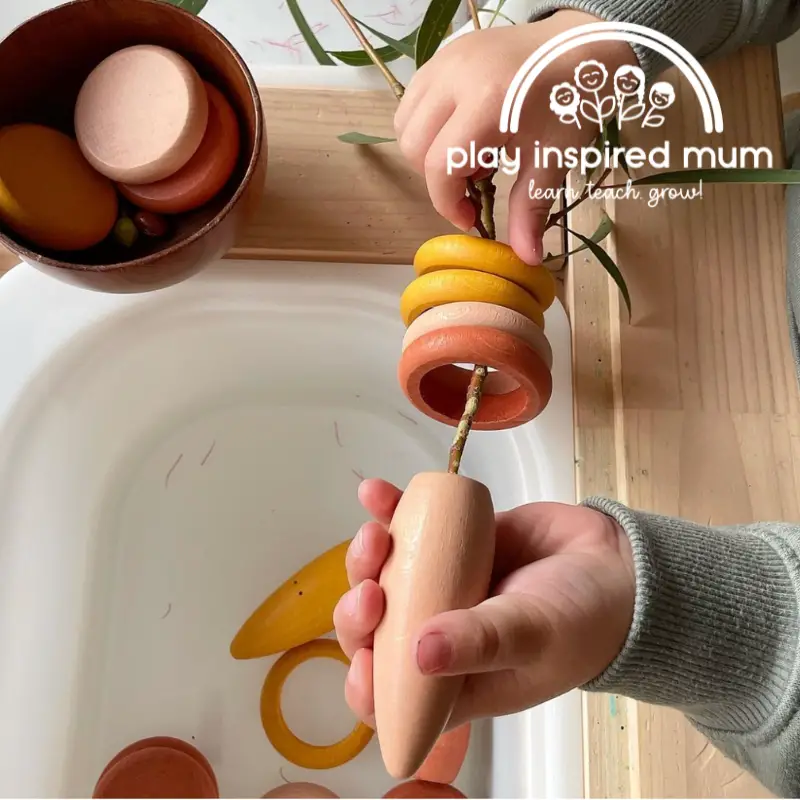
Wrapping Up with Reflection
I realized, after threading wooden rings onto natural branches with my toddler, the beauty of learning through play.
It was an eye-opening experience, seeing how fine motor skills, hand-eye coordination, and bilateral coordination could flourish outside traditional learning environments.
I cherished the moments of engagement, noting each small success and challenge overcome.
Observing the sensory play unfold, I couldn’t help but think about the value of play at home activities.
They serve as a testament to the power of simple play ideas.
For toddlers, these activities aren’t just games; they’re building blocks of development.
This threading activity, quick to set up yet rich in learning opportunities, showcases how play-based learning can seamlessly integrate into daily life.
Watching my toddler’s focus as they navigated natural branches with wooden rings sparked an idea.
Why not keep a journal of these activities?
Documenting the benefits of threading alongside other toddler play ideas seemed like a natural step.
A simple journal, filled with observations on tactile engagement and learning at home, could become a cherished record of growth.
It would go beyond capturing the moments.
It would highlight the progression and depth of learning that occurs in what seems like mere play.
The act of reflection is powerful.
It brings to light the effectiveness of each play at home activity.
By noting down the laughs, the concentration, and every little achievement, we not only celebrate the milestones but also recognize the inherent value of toddler activities.
This reflection isn’t just for us.
It’s a legacy of learning we’re building for our children, proving that sometimes, the simplest ideas are indeed the most profound.
